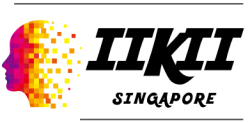The Influence of Sports/Health Activity on Self-Esteem and Subjective Happiness Related to Delinquency: Focused on Elementary, Middle, and High School Students
Abstract:
Self - esteem of children and adolescents has been studied as an essential factor influencing juvenile deviance. At this point, this study was examined the effects of sports and health activities on self-esteem and subjective psychological status to prevent juvenile delinquency and deviations. The purpose of this study was to understand the current state of child and adolescent as examining the influence of sports/health activities on self-esteem and subjective happiness. To achieve this purpose, this study was used the National Youth Policy Institute (NYPI) which conducted the subjects of total 10,506 (5,030 female and 5,476 male) by multi-stage stratified cluster sampling method. The survey was conducted from May 22 to July 17, 2017, in South Korea and researcher selected elementary, middle, high school students for this study.
The results were as follows: Firstly, sports/health activities had a statistically significant effect on self-esteem, which meant that more sports/health activities increased the positive self-esteem and decreased the negative self-esteem. Secondly, it was found that the higher the positive self-esteem, the more the subjective sense of happiness. Also, the lower the negative self-esteem, the higher subjective happiness was identified. Lastly, the higher sports/health activities had a statistically significant positive effect on subjective happiness. In other words, the higher sports/health activities increased the subjective happiness.
Keywords:
self-esteem, sports/health activities, subjective happiness, juvenile delinquency
pages:
225-228
Year:
2019
Published in:
2nd Eurasian Conference on Educational Innovation 2019
Full paper download:

